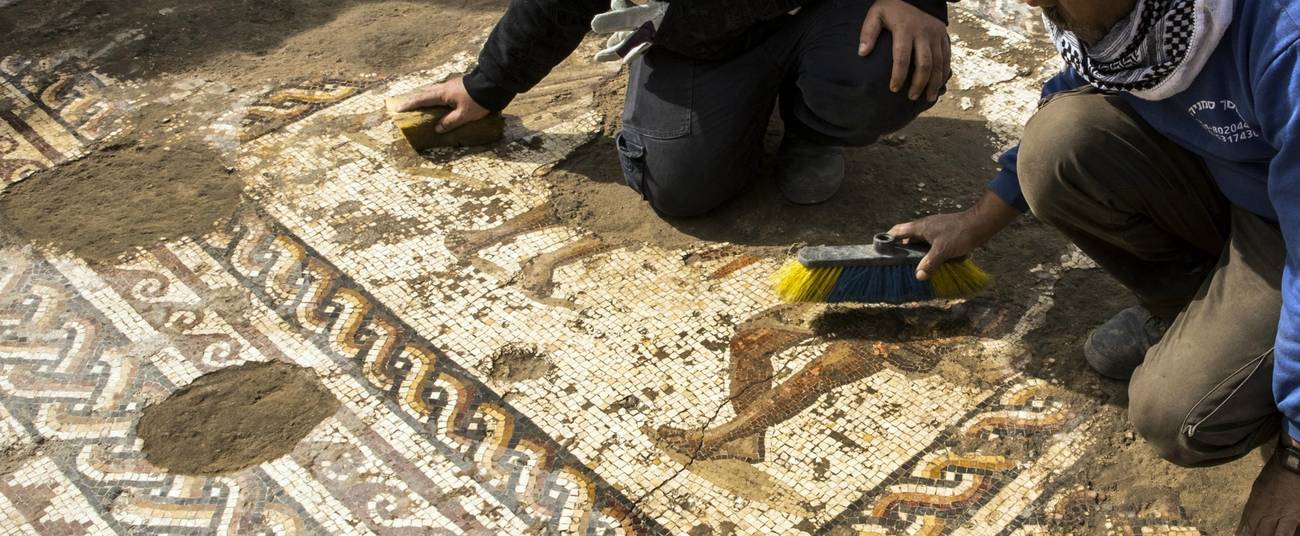Israeli Archaeologists Discover Mosaic Underneath the Ruins of a Roman Shopping Mall in Caesarea
An extremely rare find puzzles and delights




In recent months, a team of Israel Antiquities Authority (IAA) archaeologists have been working in Caesarea to continue the uncovering of a large, luxurious commercial center from the Byzantine period. Now, IAA officials say they’ve made an astounding new discovery.
A colorful mosaic, measuring three by five meters, was described as “of a rare quality” by the archaeologists, who discovered it beneath the commercial center. It depicts several men in togas, surrounded by “multicolored geometric patterns, which were formed using small tesserae (mosaic pieces) placed densely at about 12,000 stones per square meter,” according to the Times of Israel. The Roman mosaic, which bears a Greek inscription is estimated to be around 1,800 years old, which would predate the commercial center by a few centuries. Examples of mosaics from this period are exceedingly rare in Israel.
The team is still working to try to piece together the origins of the mosaic, as significant portions were damaged in the construction of the Byzantine building atop it. IAA researchers Peter Gendelman and Uzi Ad say that they believe it may have been “a main feature in an opulent house, and it is possible that the figures depicted in it were the owners of the house.”
This recent excavation is part of an ambitious project to reconstruct a massive bridge from the Byzantine period, which the IAA hopes to use as part of a promenade running from the Caesarea National Park to Jisr al-Zarqa, a nearby town.
Jesse Bernstein is a former Intern at Tablet.